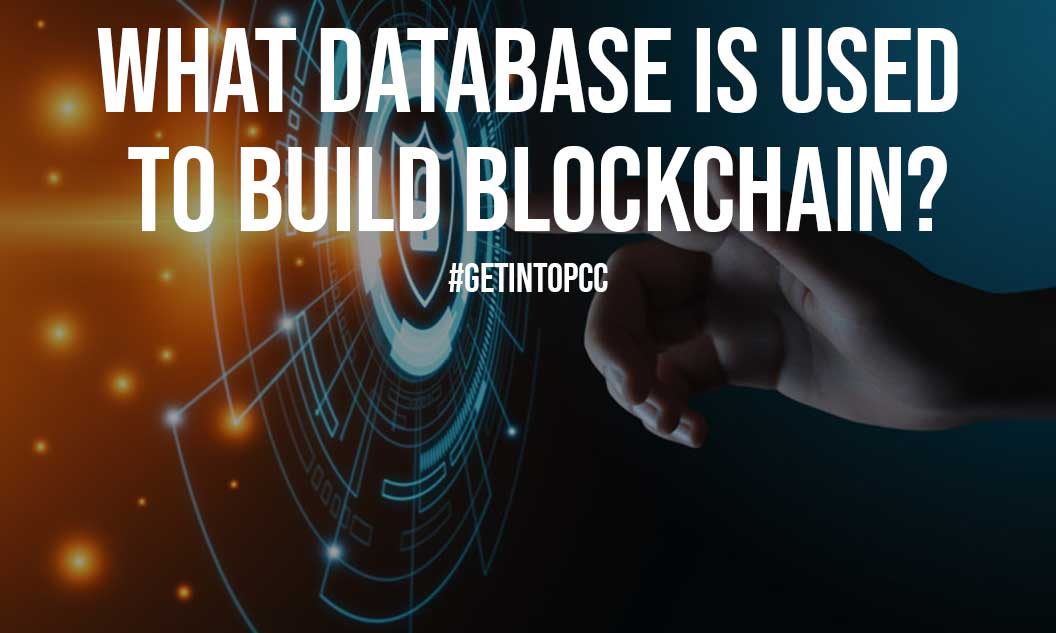Blog
What Database is Used to Build Blockchain?
What Database is Used to Build Blockchain?
There is a lot of misunderstanding about what a blockchain is and how it differs from a database. The concepts of Blockchain and database are not interchangeable because, while they both store data, their designs differ.
There’s also a difference in purpose between the two, which people may lose trying to figure out why blockchains are required and why databases are preferable for keeping specific data.

What is a database?
Table of Contents
A conventional database is a data structure that gets used to store data. This database contains data to search for insights for structured reporting, which businesses utilize to support their financial and managerial choices.
The government also uses databases to store enormous amounts of data, reaching millions of records.
- Databases began as flat-file hierarchical systems that allowed for accessible data collection and storage.
- Databases then adopted a relational paradigm, allowing for more complicated data collection by linking various databases.
- A database management system can arrange the information held in databases. A table is a data element that gets used to store data in a primary database. Each field has columns that describe the area as well as rows that construct a database record.
- A single person, known as an administrator, may change, administer, and govern a database.
- This user can create, remove, modify, and update any database record.
- They may also administer the database, such as improving performance and shrinking its size to more reasonable proportions. Because extensive databases slow performance, administrators can use optimization strategies to boost speed.
- A database is also recursive, which means you may go back and perform an operation on a specific record, modifying or deleting it.
- Admins frequently delete outdated entries from databases that have either been backed up to another database or are judged obsolete.
- As we can see, a database necessitates a great deal of control, making it very centralized.
- It’s also permission, which requires an administrator to create user accounts and then define rights for how people may access a database. Next, they must make a separate set of permissions for database users who may edit and write data to the database.
- A conventional database’s centralization establishes the system’s security and trustworthiness. Many databases get housed on private networks behind a firewall in large corporations’ data centers. They must nevertheless be handled by an administrator.
Also Read: How Can I Profit 1% Daily from Bitcoin and Crypto Trading?
Is Blockchain, then, a collection of records?
A blockchain is a cryptographically secure, unchangeable digital public record that is constantly expanding a distributed database in Bitcoin.
A blockchain is a computerized database that stores information in consistent-sized segments. To guarantee cryptographic security, the hashed information from the preceding block contains each block.
This is software that enables consumers to purchase several forms of CFDs on prominent cryptocurrencies. The factors to choose the best bitcoin trading app are without a question one among the most well-known cryptocurrencies.
Miners, or computers that act as nodes in the network, must fight with each other to find a value generated by the hash function known as the nonce.
To calculate this value, the miners must employ their computational resources, which necessitates the usage of sophisticated computer gear.
A difficulty level is a mechanism embedded into the Blockchain that defines how difficult or easy it is to solve a value based on the network’s overall hashing power.
Decentralization refers to the storage of a copy of the Blockchain by all nodes on the web. A block of transactions cannot be validated since there is no supervisor.
Instead, miners accomplish this verification by solving cryptographic problems with a complexity level proportionate to the available network hashing power.
The advantages of blockchain databases are just too many to get overlooked. Anything that offers a firm advantage over its competitors must get adopted soon in the business sector.
Also Read: All You Need to Know about Bitcoin and Oil
Conclusion
While purebred blockchain systems are not yet prepared to replace most existing databases, combining blockchain technology with a distributed database opens up a whole new world of possibilities.
